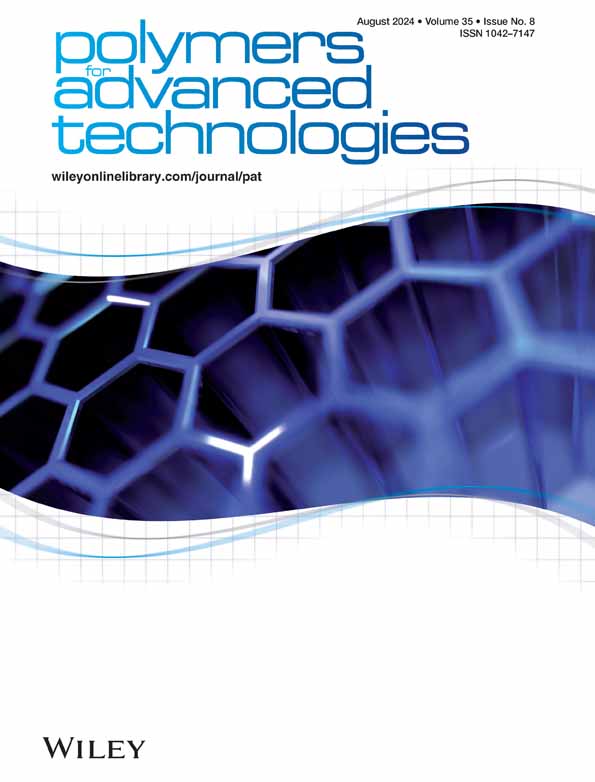打印参数对 3D 打印短玻璃纤维/丙烯腈-丁二烯-苯乙烯复合材料机械性能的影响
IF 3.4
4区 工程技术
Q2 POLYMER SCIENCE
引用次数: 0
摘要
三维(3D)打印或增材制造(AM)技术发展迅速,可通过连续添加材料从数字模型创建物体。在增材制造技术中,熔融沉积建模(FDM)是最有前途和最广泛应用的方法之一。然而,由于纯热塑性材料沉积固有的机械缺陷,有必要改善其机械性能。一种可行的方法是在热塑性基体中加入增强纤维,从而制造出适用于结构应用的聚合物复合材料。在这项研究中,研究了用 FDM 印刷的短玻璃纤维(SGF)增强丙烯腈-丁二烯-苯乙烯(ABS)的机械性能。目的是探讨喷嘴温度、壳数和打印速度等工艺参数对拉伸性能和层间剪切强度(ILSS)的影响。制造出了玻璃纤维重量分数为 10%(10 wt%)的复合长丝。此外,还研究了复合材料和纯聚合物的机械性能。在挤压和印刷过程后测量了纤维长度,发现纤维已经受损。外壳对测试结果的影响最大。本文章由计算机程序翻译,如有差异,请以英文原文为准。
Effect of printing parameters on the mechanical properties of 3D printed short glass fiber/acrylonitrile butadiene styrene composites
Three‐dimensional (3D) printing, or additive manufacturing (AM), is rapidly advancing, allowing for the creation of objects from a digital model through the successive addition of materials. Among the AM techniques, fused deposition modeling (FDM) emerges as one of the most promising and extensively utilized methods. However, the inherent mechanical shortcomings of the deposition of pure thermoplastic materials necessitate the improvement of mechanical properties. One viable approach involves integrating reinforcing fibers into the thermoplastic matrix to create polymer composites suitable for structural applications. In this study, the mechanical properties of acrylonitrile butadiene styrene (ABS) reinforced with short glass fibers (SGFs) printed by FDM were investigated. The aim was to explore the impact of process parameters, including nozzle temperature, number of shells, and print speed, on the tensile properties and interlaminar shear strength (ILSS). Composite filament with 10% weight fraction (10 wt%) of glass fiber fabricated. Also, the mechanical properties of the composite and pure polymer were investigated. The length of the fibers was measured after the extrusion and printing process, revealing that they had been damaged. The shells exerted the most significant influence on test outcomes.
求助全文
通过发布文献求助,成功后即可免费获取论文全文。
去求助
来源期刊

Polymers for Advanced Technologies
工程技术-高分子科学
CiteScore
6.20
自引率
5.90%
发文量
337
审稿时长
2.1 months
期刊介绍:
Polymers for Advanced Technologies is published in response to recent significant changes in the patterns of materials research and development. Worldwide attention has been focused on the critical importance of materials in the creation of new devices and systems. It is now recognized that materials are often the limiting factor in bringing a new technical concept to fruition and that polymers are often the materials of choice in these demanding applications. A significant portion of the polymer research ongoing in the world is directly or indirectly related to the solution of complex, interdisciplinary problems whose successful resolution is necessary for achievement of broad system objectives.
Polymers for Advanced Technologies is focused to the interest of scientists and engineers from academia and industry who are participating in these new areas of polymer research and development. It is the intent of this journal to impact the polymer related advanced technologies to meet the challenge of the twenty-first century.
Polymers for Advanced Technologies aims at encouraging innovation, invention, imagination and creativity by providing a broad interdisciplinary platform for the presentation of new research and development concepts, theories and results which reflect the changing image and pace of modern polymer science and technology.
Polymers for Advanced Technologies aims at becoming the central organ of the new multi-disciplinary polymer oriented materials science of the highest scientific standards. It will publish original research papers on finished studies; communications limited to five typewritten pages plus three illustrations, containing experimental details; review articles of up to 40 pages; letters to the editor and book reviews. Review articles will normally be published by invitation. The Editor-in-Chief welcomes suggestions for reviews.
 求助内容:
求助内容: 应助结果提醒方式:
应助结果提醒方式:


